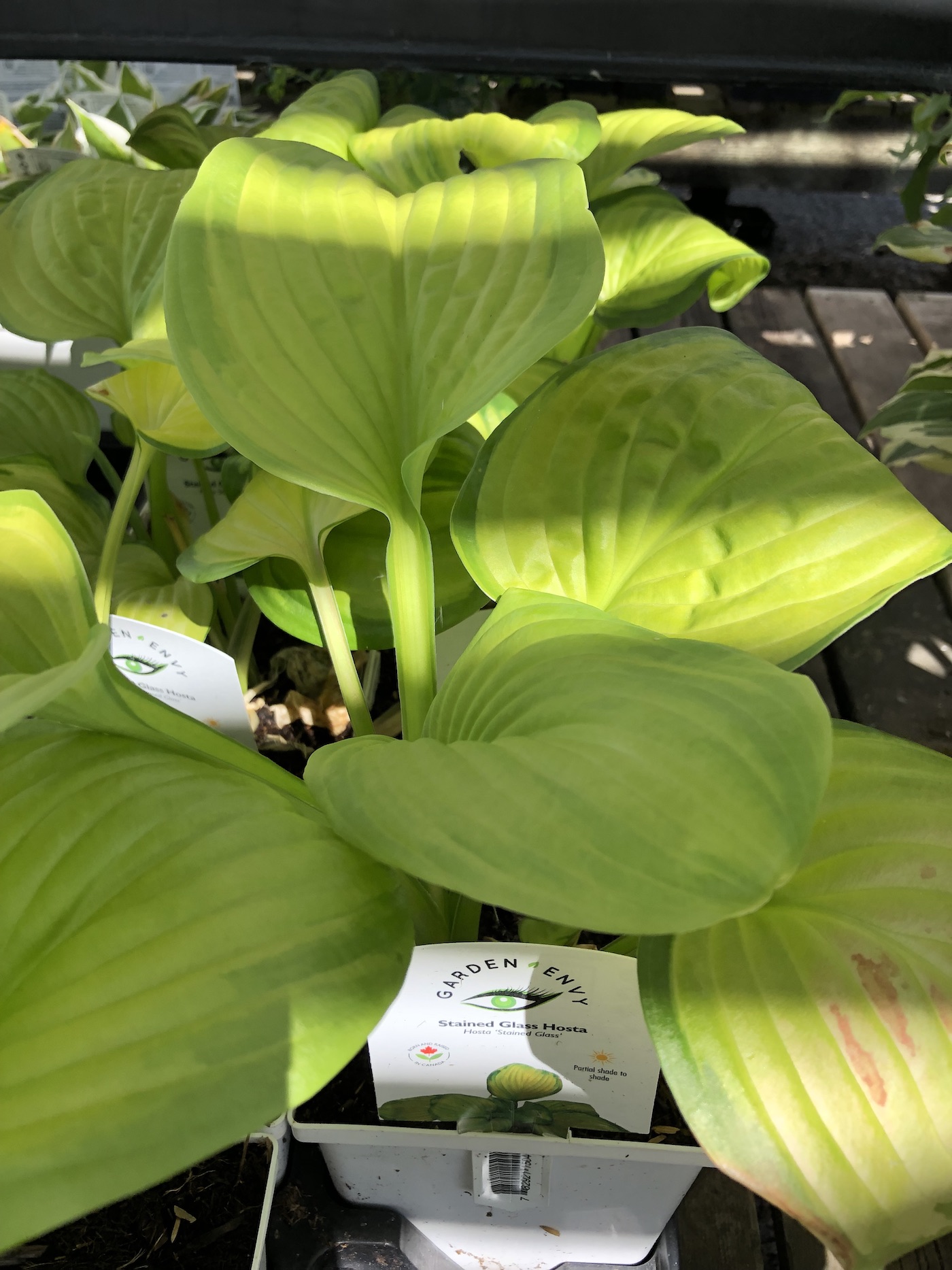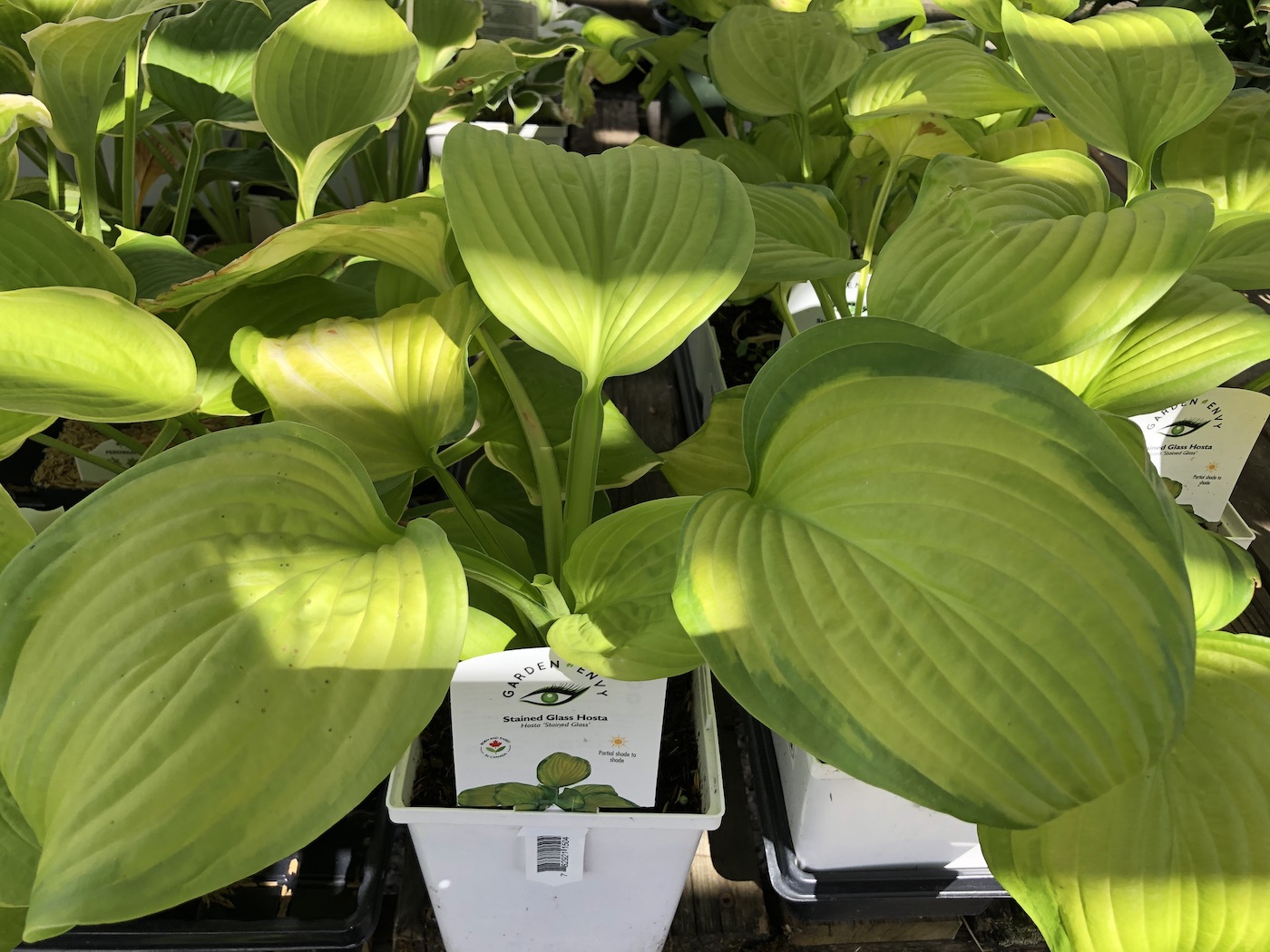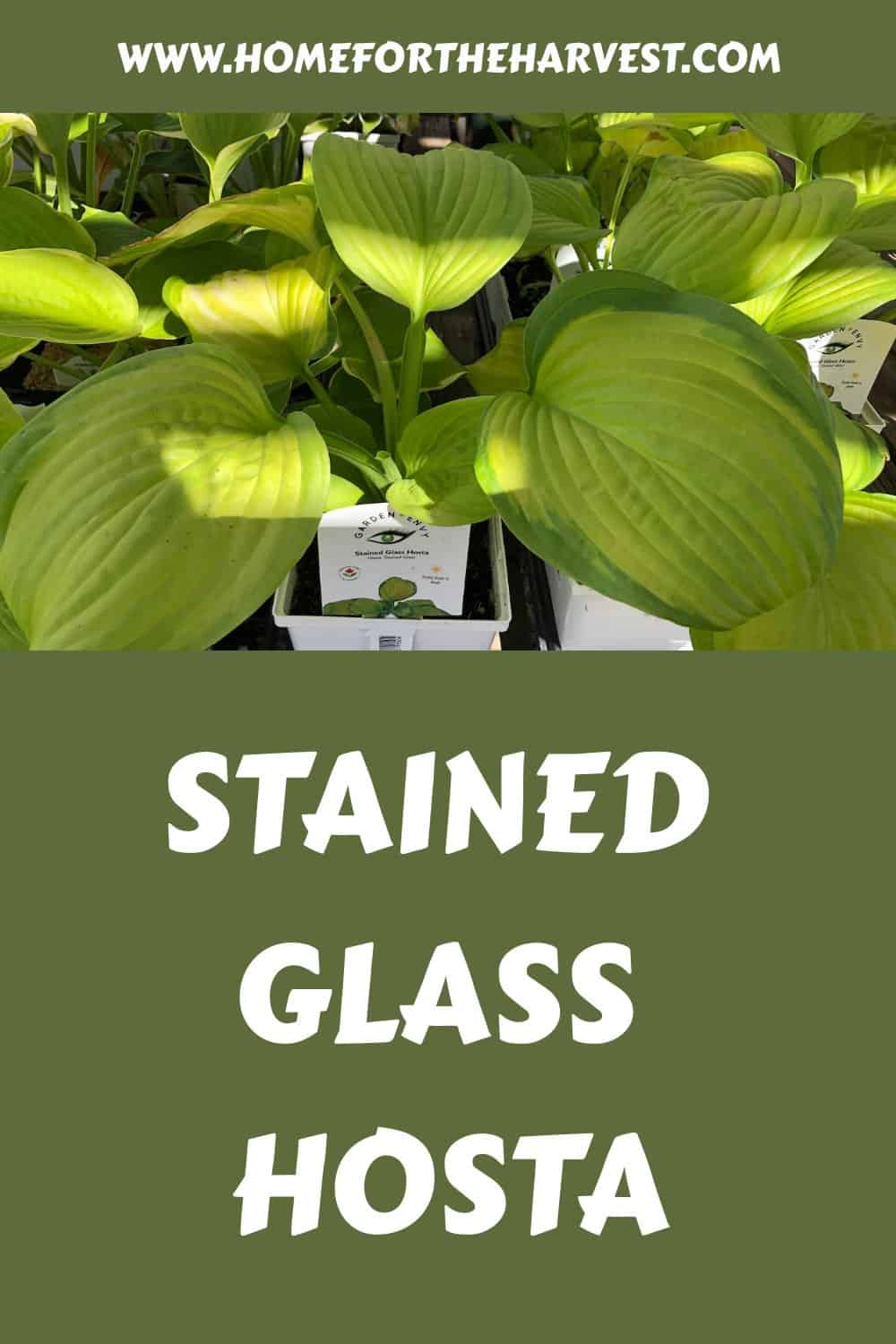Stained Glass hosta is a brightly variegated medium-sized hosta variety. These plants are known for their brilliant gold-green leaves with darker green edges and prominent veins. They also have very sweet-smelling pale lavender flowers. This popular variety is somewhat sun tolerant and grows best in slightly acidic, well-drained soil.
Stained Glass hosta basics
The Stained Glass hosta is a popular variety known for its variegated leaves and prominent veining that give it almost a “stained glass” appearance. These hosta plants grow to be 2-3 feet wide and about 16 inches tall. The flower stalks of this variety are quite tall, commonly reaching 3 feet tall. The flowers themselves are large, white with a hint of purple, and elongated with a strong sweet scent.
Stained glass hosta was selected as a sport of the popular ‘Guacamole’ hosta (which is a sport of ‘Fragrant Bouquet’ hosta). All of these lovely varieties have bright apple-green leaves with some variegation and large, fragrant lavender cream flowers. ‘Stained Glass’ hosta has been used in the development of several other popular vivid green hostas, including ‘Cathedral Windows’ and ‘Tortilla Chip’.
‘Stained Glass’ was named the American Hosta Growers Association’s Hosta of the Year in 2006 and was given an Award of Garden Merit by the Royal Horticultural Society in 2012.
Where to plant hostas
This plant prefers shady conditions (especially in the afternoon). It will tolerate some sun in the morning, and a bit of morning sun can actually help bring out the contrast in the leaf variegation. That said, too much sun will scorch the leaves and cause the variegation to fade.
Stained Glass hosta does best in rich, well-drained soil that is slightly acidic. It’s important to keep the soil moist (but not soggy). A layer of mulch can help retain moisture and suppress weeds. You can also work with organic matter to improve the soil prior to planting the hosta.
When to plant Stained Glass hosta
The best time to plant a hosta is in the spring, after all, the danger of frost has passed. If you’re buying plants from a nursery or garden center, be sure to check the roots before planting. The roots should be white and firm (not mushy) and the leaves should look fresh and healthy. Read more about when to plant hostas.

How to plant a Stained Glass hosta
Dig a hole that is twice as wide as the roots but only as deep as the soil in the planter. Amend the planting hole with some compost or well-rotted manure. Gently loosen the roots and place the plant in the hole so that the crown (where the leaves meet the roots) is slightly above ground level. Fill in around the roots with soil, gently tamping it down as you go. Water well to settle the roots.
After planting, give your hosta a slow, deep watering about once a week (depending on rainfall). You can reduce watering to every 10-14 days once the plant is established.
Caring for Stained Glass hosta
Stained Glass hostas are generally low-maintenance but do appreciate consistent soil moisture and some feeding (particularly in the spring).
Watering requirements for Stained Glass hosta
Stained Glass hosta plants thrive with ample moisture and should be watered at least once per week when first planted. Once they are established, you can reduce watering to every 10-14 days. Be sure to water at the base of the plant (rather than from above) to avoid wetting the leaves, which can lead to fungal diseases.
Fertilizing Stained Glass hosta
Stained Glass hosta plants will benefit from a monthly feeding of either a slow-release organic granular fertilizer or an all-purpose, water-soluble organic fertilizer during the growing season (spring through summer). However, too much fertilizer can cause the leaves to scorch, so be sure to follow the directions on the package.
Pruning Stained Glass hosta
Stained Glass hostas don’t require pruning but you can remove any dying or damaged leaves as needed. You can also cut back the leaves in late fall to tidy up the plant and prepare it for winter.
Plant care tips for Stained Glass hosta
When it comes to stained glass hosta plant care, the key things to remember are to keep the soil moist (but not soggy), fertilize monthly, and mulch around the plant. With just a little bit of care, your Stained Glass hosta will thrive and provide you with beautiful foliage for many years to come.
Stained Glass hosta plants grow best in moist soil, so it makes sense to mulch the surface of the soil to keep in moisture. This will also moderate the temperature of the roots and help to keep weeds down.
Another way to keep hosta plants moist is to use a soaker hose or drip irrigation system. This will deliver water directly to the roots without wetting the leaves (which can lead to fungal diseases).
If your hosta starts to look a bit ragged after a few years, you can rejuvenate it by digging it up and dividing it. This is best done in the spring, but you can also do it in the fall.
Companion plants for hostas
There are a number of plants that make good companions for stained glass hosta. Some, like ferns, help to shade the soil and keep it moist. Others, like impatiens, provide colorful blooms that contrast beautifully with the variegated leaves of stained glass hosta. A few good companion plants for hosta include:
- Ferns
- Astilbe
- Impatiens
- Coleus
- Coral Bells
- Begonias
- Caladiums
- Lamium
Pests affecting hostas
There are a number of pests that can affect stained glass hosta plants, including slugs, snails, aphids, and mealybugs. Slugs and snails can damage the leaves of stained glass hosta plants by eating the tender tissue. Aphids and mealybugs can cause leaf distortion, stunted growth, and even death.
The best way to control pests is to keep an eye on your plants and take action as soon as you see any damage. Hand-picking and disposing of slugs, snails, and pests is often the most effective method of control. You can also try using traps or barriers (such as diatomaceous earth) to keep pests away from your plants.
If you have serious pest problems, you can use insecticidal soap or horticultural oil to control them. Be sure to follow the directions on the label and take care not to get any of these products on the leaves of stained glass hosta as they can damage the plant.
Diseases affecting hostas
There are a number of diseases that can affect hostas, including powdery mildew, foliar nematodes, petiole rot, and certain plant viruses like Hosta Virus X.
Powdery mildew is a fungal disease that affects the leaves of stained glass hosta, causing them to become covered in a white powdery growth. Make sure plants have adequate air circulation and are being watered at the soil line rather than overtop of the leaves.
Foliar nematodes are tiny worms that live inside the leaves of stained glass hosta and feed on the tissue, causing the leaves to turn yellow and eventually die. These microscopic roundworms of Aphelenchoides fragariae or Ditylenchus dipsaci are typically spread from plant to plant by splashing water. Foliar nematodes are hard to get rid of once you have them in your garden, so avoid bringing unhealthy plants into your yard.
Petiole rot is a fungal disease that affects the leaf stems (petioles) of stained glass hosta, causing the stems of the leaves to turn white and the leaves to easily fall off the crown of the plant. This condition is usually caused by the Athelia rolfsii (syn. Sclerotium rolfsii) fungi (southern stem blight).
The best way to prevent diseases from affecting your stained glass hosta is to water the plant at the base rather than wetting the leaves. This will help to prevent fungal diseases from taking hold. You should also remove any affected leaves as soon as you see them and dispose of them in the trash. Also be sure to only bring healthy plants into your garden, as diseases can “hitchhike” into your yard on new plants.







